
️Korean Sentence Structure Worksheet Free Download Goodimg.co
1. Overview of Word Order in Korean The Korean language word order is SOV. Therefore, the default grammatical order is always subject - object - verb . Example: 호랑이가 먹이를 먹어요 . Horangiga meogireul meogeoyo. " A tiger is eating prey. "

Korean Sentence Structures A Complete Overview
Learn the most common Korean sentence structures. Follow. Contents. 50 Audio Lessons. 289 Vocabulary. 1. Talking About Your Profession. Learn how to use the sentence pattern "I am a "Audio • 3 Minutes. 2. Saying "There is, There are" Learn how to use the sentence pattern "There is "Audio
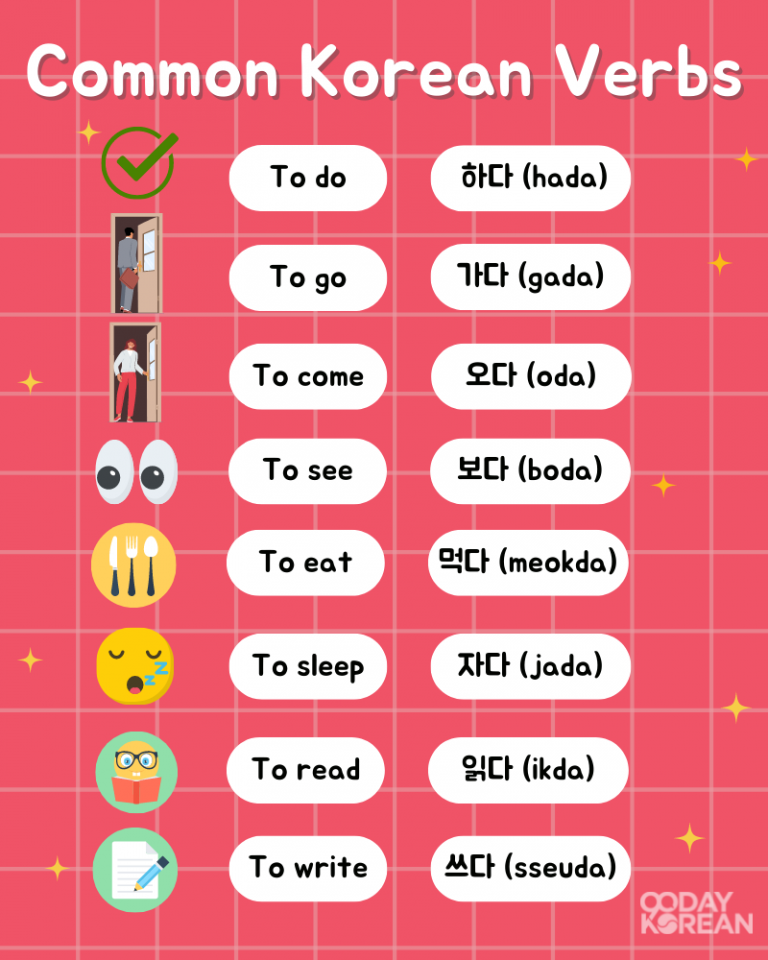
Learn the Korean Sentence Structure with this Simple Guide
Subject-Object-Verb (SOV) Order in Korean. In Korean, the verb or action word typically comes at the end of the sentence.The subject starts the sentence, followed by the object, and then the verb. So, if we translate the English sentence "I love Korea" into Korean, it becomes "I Korea love" (저는 한국을 사랑해요).

How To Make Sentences in Korean (Introduction to Korean Grammar) YouTube Korean language
2.1 How are Korean sentences structured? 3 Korean Nouns 4 Korean Pronouns 5 Korean Particles 6 Korean Adjectives 7 Basic Korean Verbs 7.1 "To be" in Korean 7.2 "To have" in Korean 7.3 "To not have" in Korean 7.4 "To do" in Korean 8 Korean Adverbs 8.1 Other Korean adverbs 8.2 Korean Adverbs of Frequency 8.3 Korean Adverbs of Place
Korean grammar lecture 0 한국어 문장 구조Korean sentence structure
Korean sentence structures are built in a whole another way than English sentence structure. To make a subject, a verb or an object, the positions of each word don't matter much. And it's because Korean grammar uses something special called Markers or Particles to make the sentence components. *Technically, the terms Markers and Particles.

"is delicious" sentence structure Learning korean grammar, Korean words learning, Korean
Most Important Korean Sentence Structures 1. Subject-Object-Verb (SOV) 2. Subject-Verb (SV) 3. Subject-Adjective (SA) Korean Particles: Markers and Indicators Topic Markers 은 and 는 Subject Markers 이 and 가 Object Markers 을 and 를 Topic Markers vs. Subject Markers What You Need to Know About Korean Sentence Structure
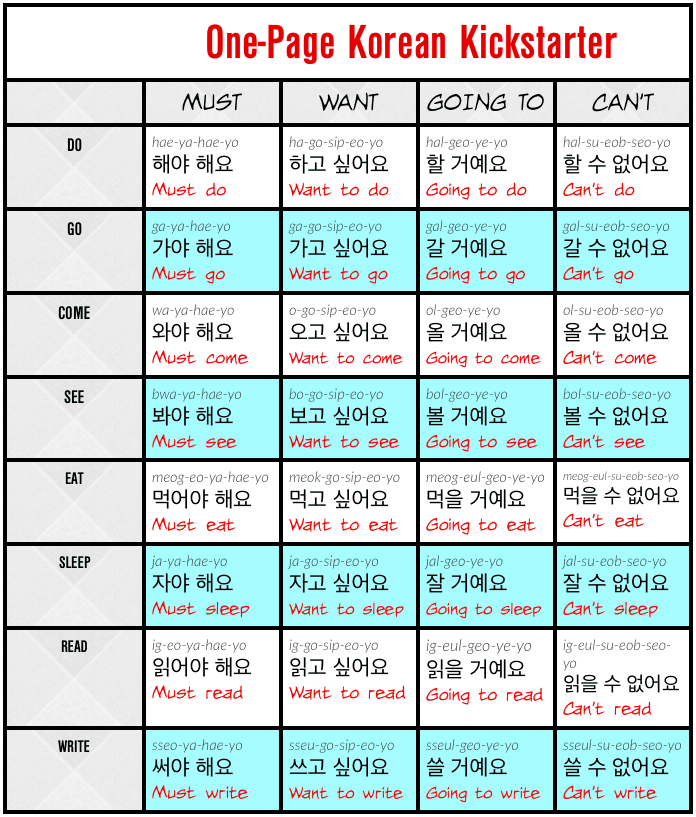
Learn the Korean Sentence Structure with this Simple Guide
What is the basic sentence structure of Korean? One of the fundamental aspects of Korean grammar is its subject-object-verb (SOV) sentence structure. Unlike English, where the object comes after the verb, Korean always puts the verb at the very end of a sentence.
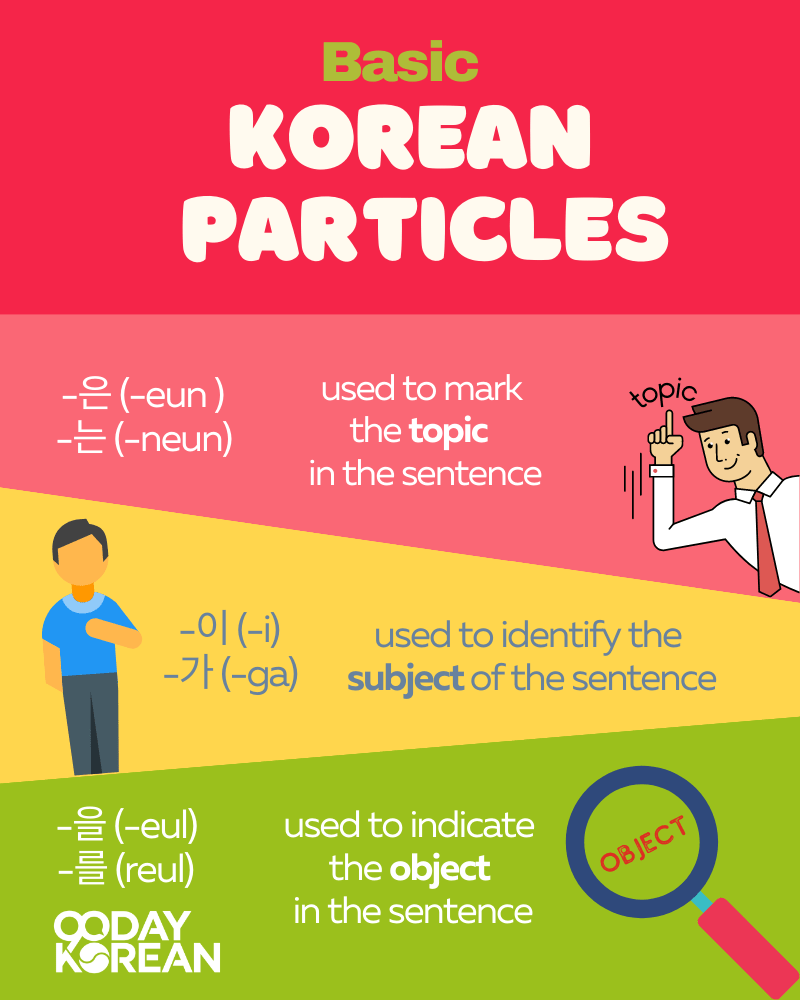
Learn the Korean Sentence Structure with this Simple Guide
In Korean, the basic sentence structure is Subject - Object - Verb/Adjective. (SOV) Contrast that with the English sentence structure of Subject - Verb - Object. (SVO) In this post we are going to look into more detailed explanations of Korean sentence structure variations for beginners beyond SOV using a lot of examples.
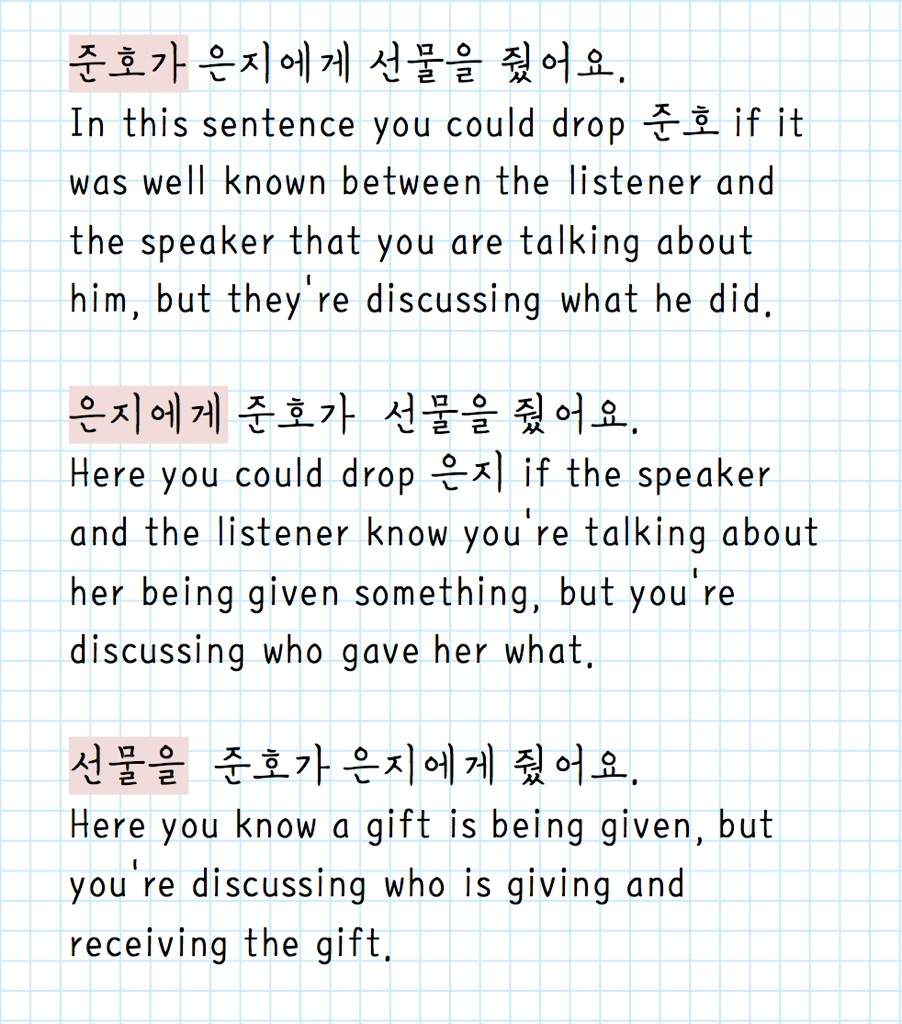
Sentence structure Korean Language Amino
Korean sentence structure is frequently regarded as one of the most challenging parts in learning Korean as a foreign language. Basic word order in Korean: SOV Basic word order in English: SVO image source: greg2630 - imgflip Let's consider English as an example.
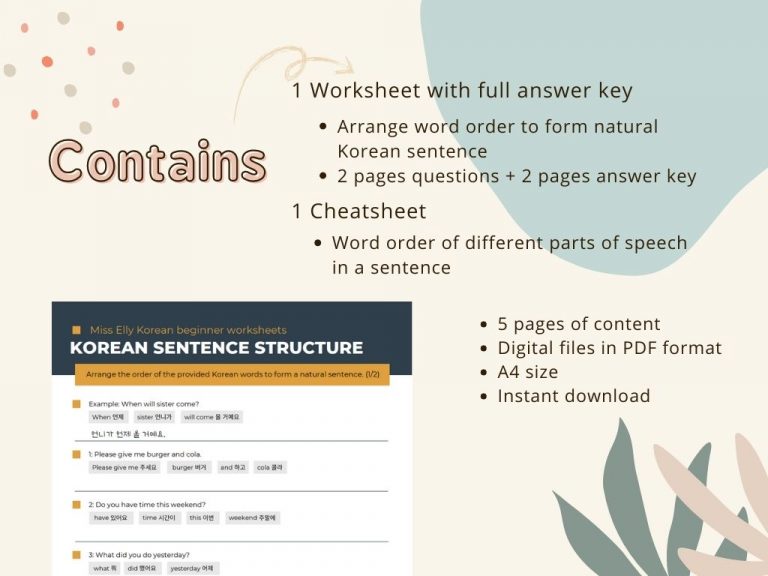
Korean sentence structure PDF cheatsheet worksheet set Miss Elly Korean
However, the word order of the most basic Korean sentence structure is 'Subject + Verb' (S+V) - it's the same as English sentences. If we add the object of the verb, the word order of Korean sentences is different from English. Sentence Type 2 - Subject + Object + Verb (S+O+V)
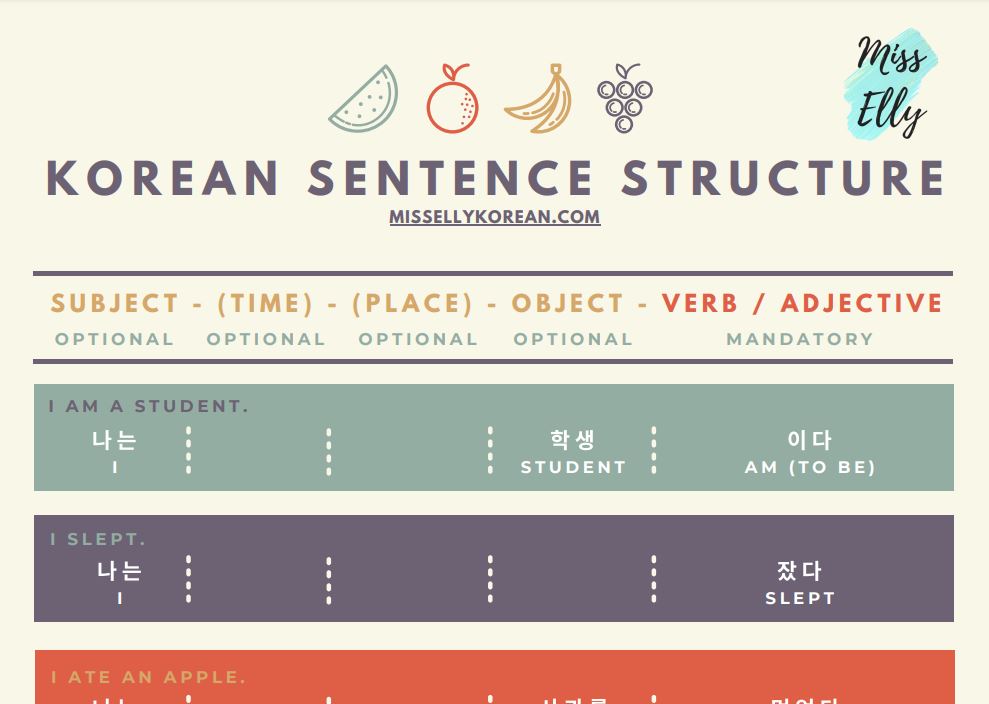
Korean sentence structure (with PDF summary) Miss Elly Korean
The Korean sentence typically consists of the : Subject - Object - Predicate (verb) Or Subject - Adjective As the word suggests, the subject is the main topic of the sentence about/around which the sentence is formed. I went to school. Jisoo ate the pizza. He rides bicycle. The sun rises in the east. The sky is beautiful.

Korean Sentence Structures A Complete Overview
Korean sentences consist of either a "subject + verb" or a "subject + object + verb." For example: - 캐럴이 와요 [Carol-i wha-yo], Subject + verb, Carol comes. - 에릭이 사과를 먹어요 [Eric-i sa-gwa-leul muk-uh-yo], Subject + object + verb, Eric eats an apple.
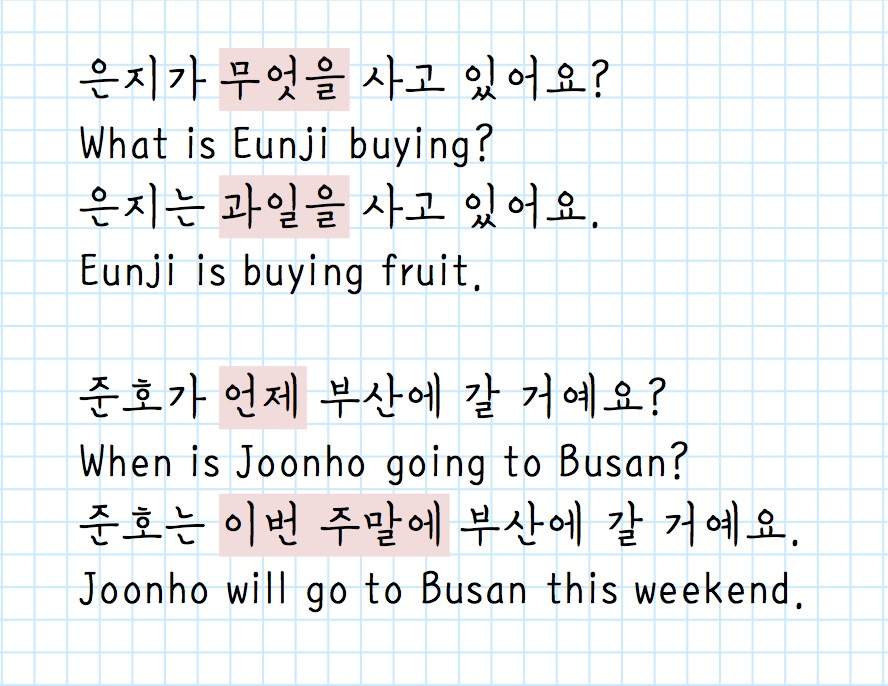
Sentence structure Korean Language Amino
Lesson 1: Basic Korean Sentences Click here for a Workbook to go along with this lesson. This Lesson is also available in Español, Русский, Français, 中文, Deutsch, Português, Nederlands, Ελληνικά. Čeština, Canadian English, български, Italiano, Magyar, Suomi, Türkçe, українська, کوردی , العربية and עִבְרִית

Korean Sentence Structures A Complete Overview
Explorer is a new kind of study aid that will analyze any Korean sentence you give it, identifying and explaining all the parts-of-speech, particles, conjugations and grammar patterns, show the phrase-structure of the sentence and give individual word-meanings as well as a whole-sentence translation.
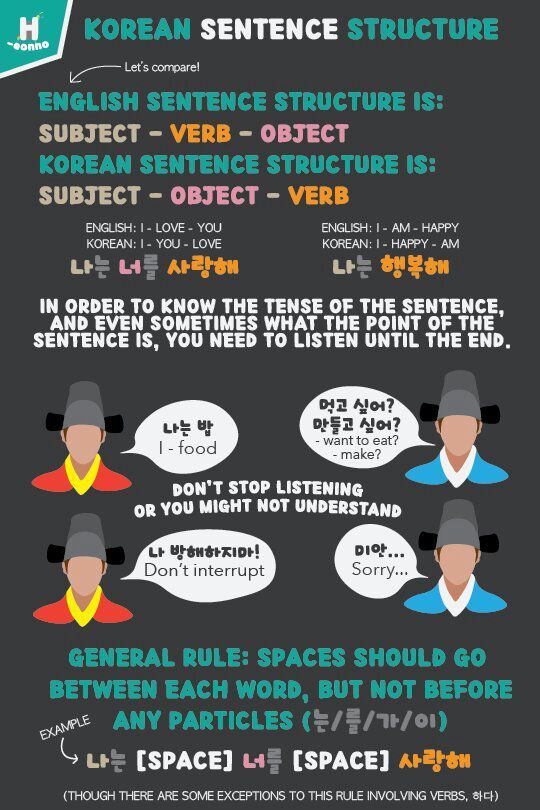
Korean Sentence Structure Korean School Amino
The basic Korean sentence structure has a subject-object-verb (SOV) order. This basic sentence structure is different from the English sentence structure, i.e., subject-verb-object (SVO) order. Korean Language And Culture
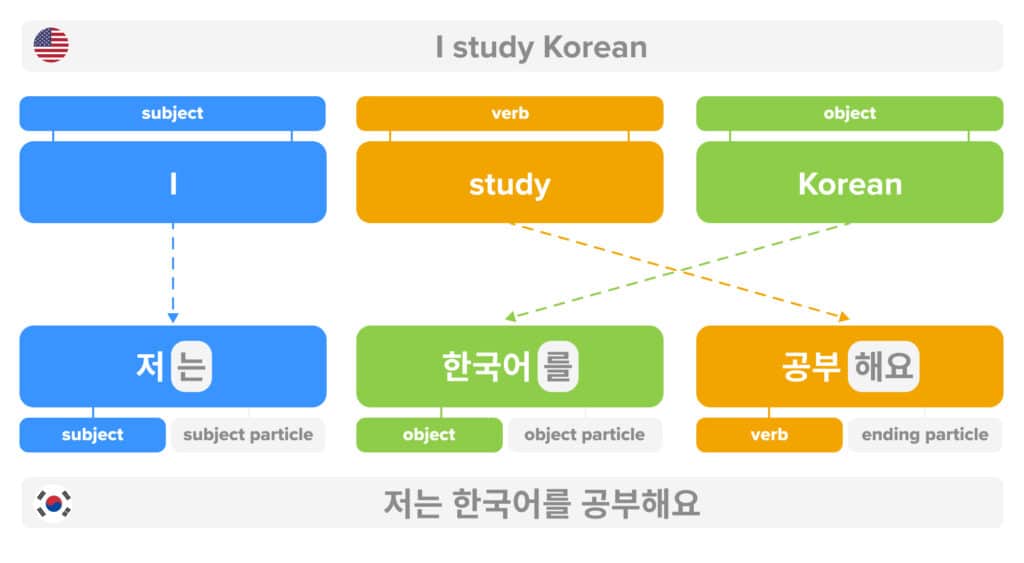
Korean Sentence Structure The Practical Guide to Basic Word Order Patterns FluentU Korean
Get the Free "Korean Sentence Structure" PDF Contents [ hide] 1 Korean Sentence Structure 2 Basic Korean Sentence Structure 3 Verbs for Making Simple Korean Sentences 3.1 Korean Sentence Structure in Hangul 4 How to Form Basic Korean Sentences 4.1 Korean Sentence Examples 4.1.1 Korean Sentence Example #1 - 자다 (jada)